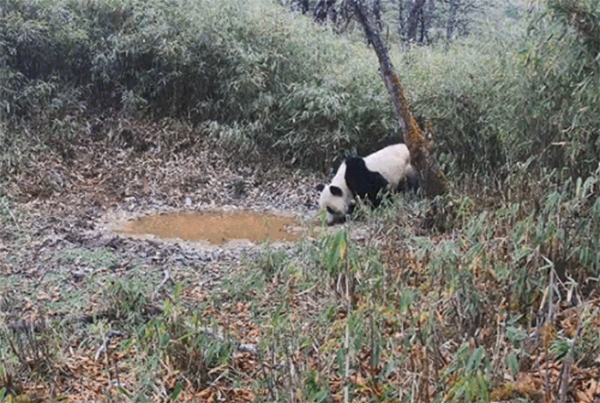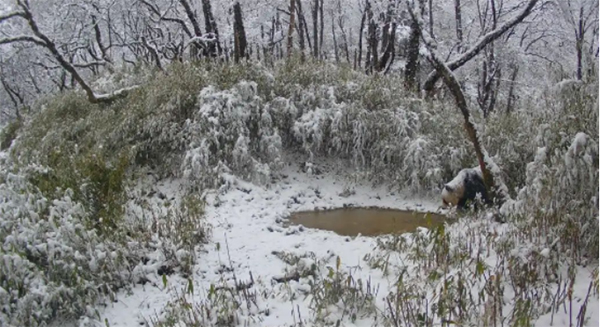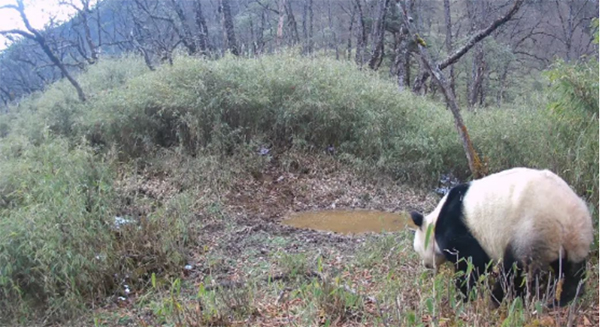
The image of a giant panda drinking water captured on November 9 [Photo via the Chengdu Management Bureau of the Giant Panda National Park]
From November 3rd to November 18th, infrared cameras installed in the core area of the Chongzhou region of the Giant Panda National Park transmitted live footage of pandas nine times.

The image of a giant panda drinking water captured on November 15 [Photo via the Chengdu Management Bureau of the Giant Panda National Park]
In one video, a panda slowly walked towards a water source in a forest near a puddle, lowered its head, flapped its ears, and drank water before disappearing into the trees.

The image of a giant panda drinking water captured on November 17 [Photo via the Chengdu Management Bureau of the Giant Panda National Park]
It is understood that some areas of the Chengdu section of the Giant Panda National Park have achieved real-time transmission of infrared cameras through a self-organized network. This not only reduces human disturbance to the habitat of wild animals to a large extent but also allows management personnel to obtain image data in a timely manner and effectively grasp the resource status of wild animals and plants in the area.
In addition, the Chengdu Management Bureau of the Giant Panda National Park has carried out wireless self-organized network infrared camera pilot deployments in the Chongzhou and Dayi regions. In the future, it will consider deploying them throughout the entire area to strengthen the tracking of individual activity trajectories and observation of habitat changes, providing stronger technical support for the protection and management of wildlife and their habitats.
Copyright ©1997- by CRI Online All rights reserved